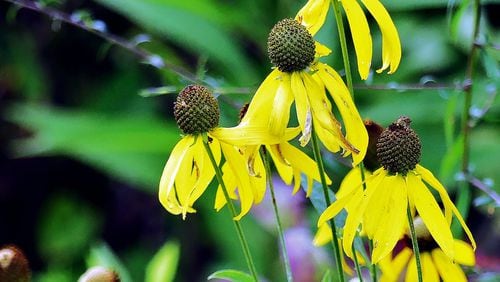In the book “The Natural Communities of Georgia,” the authors write: “From cool, moist mountain peaks in the Blue Ridge to the sun-drenched shores of our Atlantic coast, this state boasts an amazing diversity of natural habitats.”
Indeed. The many different habitats, which support a wide range of flora and fauna, make Georgia the nation’s sixth most biologically diverse state.
Braving July’s heat, several of us Georgia Botanical Society members last weekend explored two of the state’s rarest natural habitats — small grasslands known as blackland (or black belt) prairies. One was in the Oaky Woods Wildlife Management Area in Houston County; the other, also in that county, was on private land permanently protected by a conservation easement with the Oconee River Land Trust.
Georgia’s blackland prairies are similar to those found in a narrow belt across the Southeast and stretching into Texas. The belt once was larger, but many of the grasslands were destroyed by agriculture and suppression of fire, which allowed trees to creep in.
According to botanist Tom Patrick with the Georgia Department of Natural Resources, remnant prairies persist due to occasional fire and their peculiar chalk-like soils, which shrink and swell, killing trees and other woody plants but allowing hundreds of species of native grasses, showy wildflowers and other herbaceous plants to thrive. Several of the plants are rare.
July is peak bloom time for the wildflowers, and last weekend we found some 20 species in bloom. The dominant flower by far was the gray-headed coneflower, whose bright yellow blooms made the grasslands glow with brilliant color.
IN THE SKY: From David Dundee, Tellus Science Museum astronomer: The South Delta Aquarid meteor shower, visible tonight and all next week, reaches a peak of 15 meteors per hour on Friday night (July 27) — in the southeast from midnight until dawn. The moon will be full on Friday. Mercury is low in the west just after dark. Brightly shining Venus is in the west around dusk and sets about three hours later. Mars, also shining brightly, rises out of the east around midnight. Jupiter is high in the south at dusk. Saturn is high in the east at sunset and will appear near the moon Tuesday night.
About the Author






